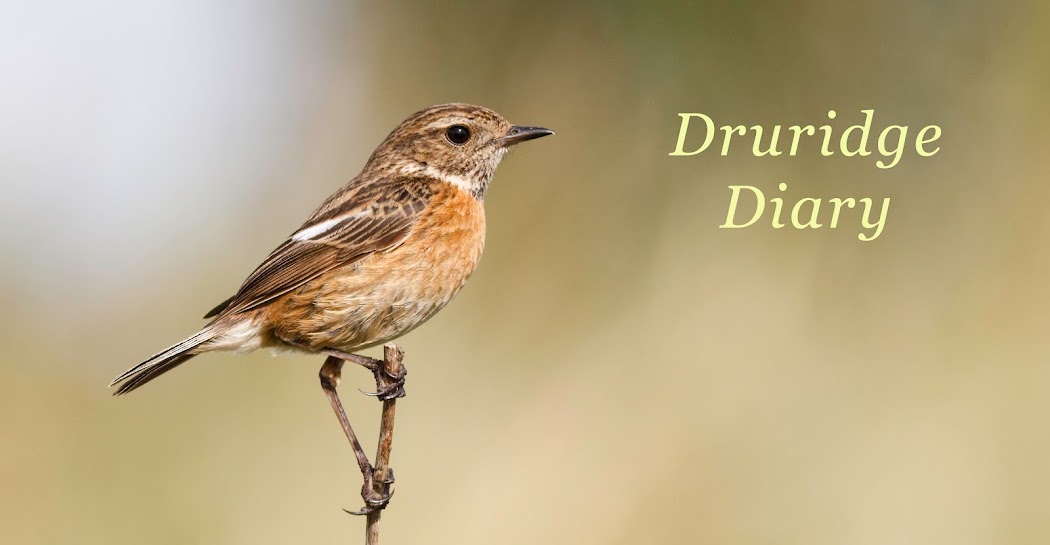Tradition dictates that on the 1st January each year (or my first visit to the patch) I see a species that I didn't see in the previous year. It probably doesn't happen that often but it feels as though it does.
I nearly followed tradition this year - it was the 2nd of January rather than the 1st.
I saw a respectable 52 species yesterday in two visits on New Years Day, but nothing I hadn't seen in the previous year. Some good January species included Mistle Thrush (13 still in the fields), Bullfinch and Goldcrest on our morning walk and Mediterranean Gull, Black-throated Diver and Kittiwake on an evening seawatch. The other New Year tradition at Druridge was upheld with near-naked people thinking it a good idea to go into the sea...
 |
No gold at the end of this rainbow but some good species for the year
|
This morning dawned a colder, greyer day with sleety-snow falling. We didn't have an early start, checking the farm first and adding a flock of nine Redwing and 12
Fieldfare to the list and then setting out on our walk at11.15am, north, into the bitingly-cold wind. We found the finch flock in the dunes, Twite (120), Goldfinch, Linnet, Chaffinch and a few Reed Buntings and Skylarks in the dunes. We headed back along the beach, seeing nothing of note.
 |
| Cold and grey with snow clouds on the horizon |
As we approached the car, news came through of a Shorelark north of Hemscotthill Farm. Worth a look I thought...
Birdguides reported it in the field immediately south of the patch boundary, which is in a fodder crop and is being stripped-grazed by beast. I got onto a handful of skylark in the fodder-stubble, but the light was against me so I headed south a bit - off-patch, for better light. I soon found the Shorelark feeding in among the Skylarks, but of course, I had to go back onto the patch to see it from there.
This was my first Shorelark since 2014 when one was on the dunes north of the Dunbar Burn, pursued by photographers.
Later, an Egyptian Goose was reported from the pool nearer to the farm, but it had gone when I returned in the afternoon.
I had another short seawatch as the wind was in the north. Black-throated Diver was still on the sea and a single Great Northern Diver flew north as did a single Gannet. Auks passage was steady and one with an all-black head stood out from the others, I photographed it - a Guillemot in breeding plumage already, Stewart Sexton reported that he'd seen a few today.
The highlight of evening seawatches either side of Christmas has been the gull roost. From dusk, no earlier than 3.30pm, gulls arrive in flocks from the fields to the west to roost on the sea - thousands of them! It's a steady passage until dark when there are over 4000 gulls on the sea, about 150m offshore. They're all Black-headed and Common Gulls (about 65-70% BHG, 35-30% CG) with the odd Herring and I've seen up to ten Med Gulls - there could be dozens more as it's impossible to go through them before the light fades - an amazing spectacle.
I could see the Starling murmuration at Chevington from my dune-top perch, another great spectacle.
A good start to 2021 with 68 species over two days. Effort will ease-off when I go back to work next week but it looks as though home-working will be the norm for some time, which gives me more opportunities.













